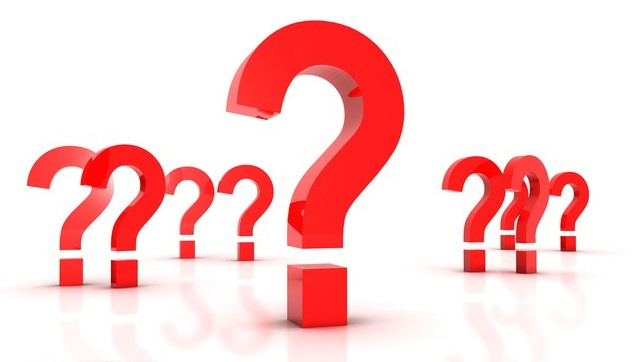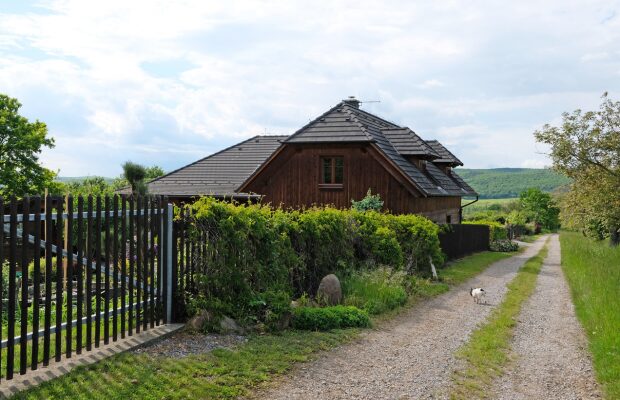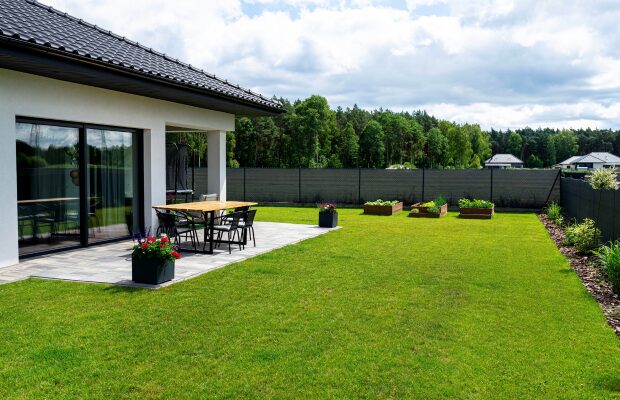If you’re buying a property in the UK, you may have heard about stamp duty.
But what is it and how much will you have to pay?
We’ve answered all your questions in this stamp duty guide, alongside some great expert advice from Martin & Co’s Managing Director Ellie Hall.
What is stamp duty?
Stamp duty is the tax you may have to pay when buying a residential property in England or Northern Ireland.
In Wales, the tax is known as Land Transaction Tax (LTT) and in Scotland it’s called Land & Buildings Transaction Tax (LBTT)
Stamp duty, LTT, and LBTT apply regardless of whether the property you’re purchasing is freehold or leasehold and for both cash purchases and those made with a mortgage.
Why do we pay stamp duty?
Stamp duty provides billions of pounds in revenue to the UK government and can also have a major impact on the performance of the UK property market.
In England and Northern Ireland, the government raised £7.6billion in stamp duty, despite the tax ‘holiday’ introduced to stimulate the property market at the start of the Covid-19 pandemic.
How does stamp duty work?
Stamp duty in England and Northern Ireland is applied in tiers or ‘bands’ which relate to the price of the property you’re purchasing.
As the price of the property you’re buying increases, you’ll fall into higher tax bands, meaning you’ll pay more in stamp duty.
Land Transaction Tax (LTT) in Wales and Land and Buildings Transaction Tax (LBTT) in Scotland work in a similar way, although the rates paid in each band can vary from country to country.
Do you pay stamp duty when you sell a house?
Stamp duty is only payable by buyers on property purchases.
Sellers do not have to pay stamp duty on the sale of their property – only if they’re buying another.
What is the stamp duty threshold?
Stamp duty in England and Northern Ireland, Land Transaction Tax (LTT) in Wales, and Land & Buildings Transaction Tax (LBTT) in Scotland is payable on properties above a certain threshold price.
England and Northern Ireland
In England and Northern Ireland, stamp duty is payable on properties costing more than £125,000.
If you’re a first-time buyer in England or Northern Ireland, stamp duty is due on properties costing more than £300,000.
Scotland
In Scotland, Land & Buildings Transaction Tax (LBTT) is due on properties costing more than £145,000.
First-time buyers in Scotland only pay LBTT on properties costing more than £175,000.
Wales
Land Transaction Tax (LTT) in Wales is payable on properties costing more than £180,000, with no first-time buyer relief available.
What are the stamp duty rates?
The rates of stamp duty in England and Northern Ireland, Land Transaction Tax (LTT) in Wales, and Land & Buildings Transaction Tax (LBTT) fall into bands which relate to portions of a property’s purchase price.
In England and Northern Ireland, and Scotland, first-time buyers pay slightly different rates to existing homeowners, while all four UK nations charge additional stamp duty for those buying additional properties, such as buy-to-lets or second homes.
England and Northern Ireland
The standard stamp duty rates in England and Northern Ireland are:
| Portion of purchase price | Stamp duty rate |
| £0 – £125,000 | 0% |
| £125,001 – £250,000 | 2% |
| £250,001 – £925,000 | 5% |
| £925,001 – £1.5m | 10% |
| £1.5m + | 12% |
Stamp duty rates for first-time buyers in England and Northern Ireland buying property worth up to £500,000 are:
| Portion of purchase price | Stamp duty rate |
| £0 – £300,000 | 0% |
| £300,001 – £500,000 | 5% |
If you’re a first-time buyer purchasing a property for more than £500,000, you’ll pay the standard rates of stamp duty.
Stamp duty rates in England and Northern Ireland for those buying additional homes for more than £40,000 are:
| Portion of purchase price | Stamp duty rate |
| £0 – £125,000 | 3% |
| £125,001 – £250,000 | 5% |
| £250,001 – £925,000 | 8% |
| £925,001 – £1.5m | 13% |
| £1.5m + | 15% |
Non-residents of England and Northern Ireland, meanwhile, may have to pay an additional 2% in stamp duty on top of both the standard and additional home rates.
Scotland
In Scotland, Land & Buildings Transaction Tax (LBTT) is charged at:
| Portion of purchase price | LBTT rate | LBTT additional home rate |
| £0 – £145,000 | 0% | 4% |
| £145,001 – £250,000 | 2% | 6% |
| £250,001 – £325,000 | 5% | 9% |
| £325,001 – £750,000 | 10% | 14% |
| £750,000 + | 12% | 16% |
First-time buyers in Scotland, meanwhile, will pay:
| Portion of purchase price | LBTT rate |
| £0 – £175,000 | 0% |
| £175,001 – £250,000 | 2% |
| £250,001 – £325,000 | 5% |
| £325,001 – £750,000 | 10% |
| £750,000 + | 12% |
Wales
Welsh rates of Land Transaction Tax for all buyers are:
| Portion of purchase price | LTT rate | LTT additional home rate |
| £0 – £180,000 | 0% | 4% |
| £180,001 – £250,000 | 3.5% | 7.5% |
| £250,001 – £400,000 | 5% | 9% |
| £400,001 – £750,000 | 7.5% | 11.5% |
| £750,001 – £1.5m | 10% | 14% |
| £1.5m + | 12% | 16% |
How much stamp duty will I pay?
The total amount of stamp duty you’ll pay when buying in England and Northern Ireland will depend on the price of the property you’re purchasing and the stamp duty bands that purchase price covers.
Example #1
Stephanie is selling her current property and buying a new home worth £500,000.
She’s not a first-time buyer, nor does she own an additional property.
Stephanie’s stamp duty bill works out as follows:
| Portion of purchase price | Stamp duty rate | Portion of bill |
| £0 – £125,000 | 0% | £0 |
| £125,001 – £250,000 | 2% | £2,500 |
| £250,001 – £500,000 | 5% | £12,500 |
Stephanie’s total bill is: £15,000
Example #2
Kate is an existing homeowner but is buying a property for £200,000 to rent out as a buy-to-let.
Kate is not a first-time buyer but will now own two properties, meaning she’ll pay the additional home rate of stamp duty as follows:
| Portion of purchase price | Stamp duty rate | Portion of bill |
| £0 – £125,000 | 3% | £3,750 |
| £125,001 – £200,000 | 5% | £3,750 |
Kate’s total stamp duty bill is: £7,500
Example #3
Andy and Jessica are both first-time buyers purchasing a house together for £320,000.
Because they’re buying for the first time, they qualify for additional stamp duty relief up to £300,000, meaning their bill works out at:
| Portion of purchase price | Stamp duty rate | Portion of bill |
| £0 – £300,000 | 0% | £0 |
| £300,000 – £320,000 | 5% | £1,000 |
Andy and Jessica’s total stamp duty bill is £1,000
How to calculate stamp duty
The best way to calculate stamp duty is by using an online calculator.
It’s important to calculate your potential stamp duty bill when looking for a property to buy.
This will mean you can factor the cost of the tax into your overall budget.
“Remember to calculate your stamp duty costs prior to making your offer,” advises Martin & Co Managing Director Ellie Hall.
“This way, you can factor this in when you’re ready to take the plunge, avoiding a higher tax band.”
When is stamp duty payable?
Stamp duty is payable within 14 days of completion if you’re buying a property in England or Northern Ireland.
In Wales, Land Transaction Tax (LTT) must be paid within 30 days of the day following your completion date.
And in Scotland, Land & Buildings Transaction Tax (LBTT) is due within 30 days of the completion date.
Can you avoid paying stamp duty?
The only way to avoid paying stamp duty is if you meet the criteria for stamp duty relief.
That means you would need to be:
A first-time buyer purchasing a property for £300,000 or less
An existing or previous homeowner buying a property for £125,000 or less
“Unfortunately, there’s no real way to avoid paying this tax. This will affect you no matter how you’re paying, and no matter whether the property is freehold or leasehold,” advises Martin & Co Managing Director Ellie Hall.




